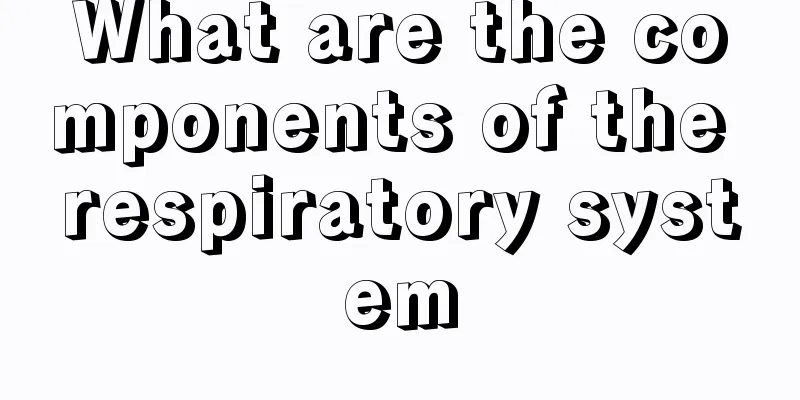What are the components of the respiratory system

|
The respiratory system is an organ for ventilation and gas exchange, and is an indispensable basis for maintaining our lives. The human respiratory system includes the nose, pharynx, larynx, trachea, and bronchi, so we can better understand the function of the respiratory system by understanding these components. 1. The conduct of various activities. The human respiratory system includes gas passages (nose, pharynx, larynx, trachea, bronchi) and places for gas exchange (lungs) as well as blood circulation, lymphatic and nerve structures. The pleura and pleural cavity, mediastinum, thorax and respiratory muscles are all necessary devices to ensure respiratory movement. 2. If the human respiratory system is compared to a factory, then the nose, pharynx, larynx, trachea, and bronchi are pipelines for raw material transportation, the lungs are the place where raw materials are processed, and the thorax, respiratory muscles, etc. are the power system to maintain the operation of the factory. Understanding the structural characteristics of the respiratory system will help you understand and master the relevant knowledge of chronic bronchitis. The airway is usually divided into two parts, namely the upper respiratory tract and the lower respiratory tract. The upper respiratory tract includes the nose, pharynx, larynx and its adjacent organs (such as tonsils and paranasal sinuses). The nasal cavity is divided into left and right cavities by the nasal septum, and is connected to the outside world by the nostrils. It is the gateway for gas to enter and exit. In addition to the olfactory function, it also has the functions of filtering dust, purifying dust and bacteria in the air, and increasing the temperature and humidity of the inhaled air. 3. In addition, when the nasal mucosa is stimulated by harmful gases or foreign objects, sneezing and runny nose may occur to remove harmful substances and protect the human body. The pharynx is divided into three parts: nasopharynx, oropharynx and laryngopharynx, which are connected to the nasal cavity, oral cavity and laryngeal cavity respectively, and are common passages for the digestive tract and respiratory tract. Because the submucosal lymphoid tissue of the pharynx is rich, it forms the pharyngeal lymphatic ring, which surrounds the connection between the mouth, nose and pharyngeal cavity, prevents pathogenic microorganisms from invading the lower respiratory tract, and has an important defense function. The laryngeal cavity is a passage connecting the pharyngeal cavity and the trachea, which is composed of cartilage, ligaments, laryngeal muscles and mucosa. The gap between the left and right vocal cords is called the glottis, which is the narrowest part of the upper respiratory tract. |
<<: Introduction to the use of ventilator
>>: What is the function of deer antler
Recommend
Can skin cancer on the neck be cured?
Cancer is a disease that makes people shudder. Wi...
Is small cell lung cancer dangerous?
Is small cell lung cancer harmful? Most patients ...
What to eat for tongue ulcer? What to do if you have tongue ulcer?
What to eat for tongue ulcer? What to do if you h...
Explain the clinical manifestations of pancreatic cancer
Pancreatic cancer is a common malignant tumor, wh...
Psychology of people who sleep with fists clenched
Many people like to sleep with their fists clench...
What are the benefits of adding rock sugar to white wine
Drinking is actually a skill. Anyone with a good ...
What is the knowledge of disease prevention and health preservation in autumn
When the seasons change, people with low immunity...
What are the health guidelines for heart failure
Heart failure is a syndrome of heart dysfunction ...
How to treat fever caused by kidney stones
Kidney stones may cause urinary tract infection, ...
I don't know why I'm hungry
Hunger and fullness are normal physiological reac...
How to adjust to a normal biological clock
Everyone is familiar with the term biological clo...
Symptoms of knee dislocation
Knee dislocation is a relatively common phenomeno...
Pay attention to the following 4 points when taking nasopharyngeal carcinoma seriously
Nasopharyngeal carcinoma seriously affects the ph...
Is pancreatic cancer lymph node enlargement a sign of metastasis?
Pancreatic cancer patients may experience swollen...
What are the symptoms of prostate cancer?
In recent years, prostate cancer has become a maj...









